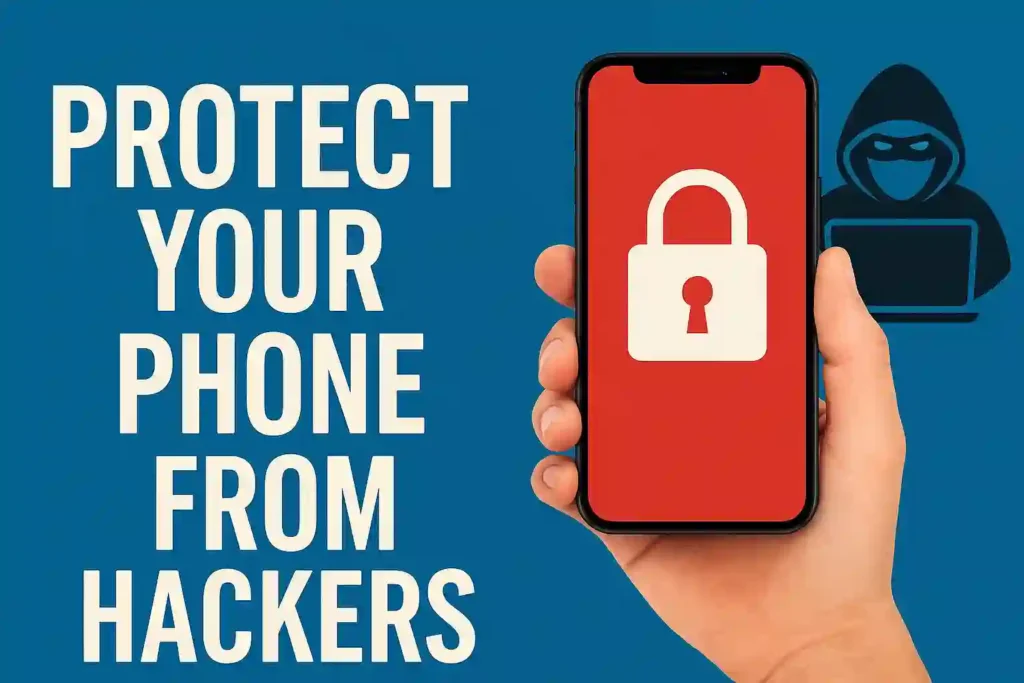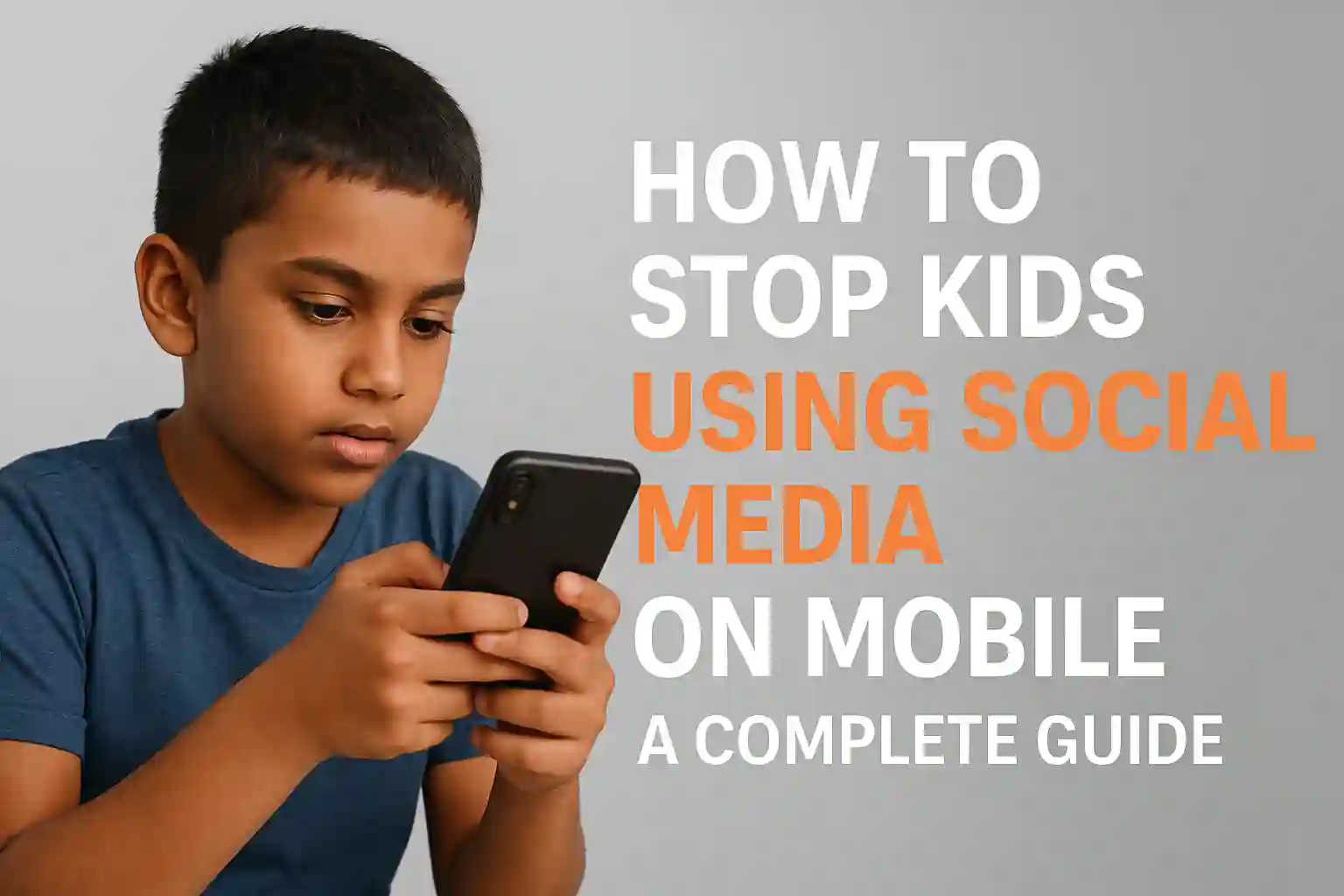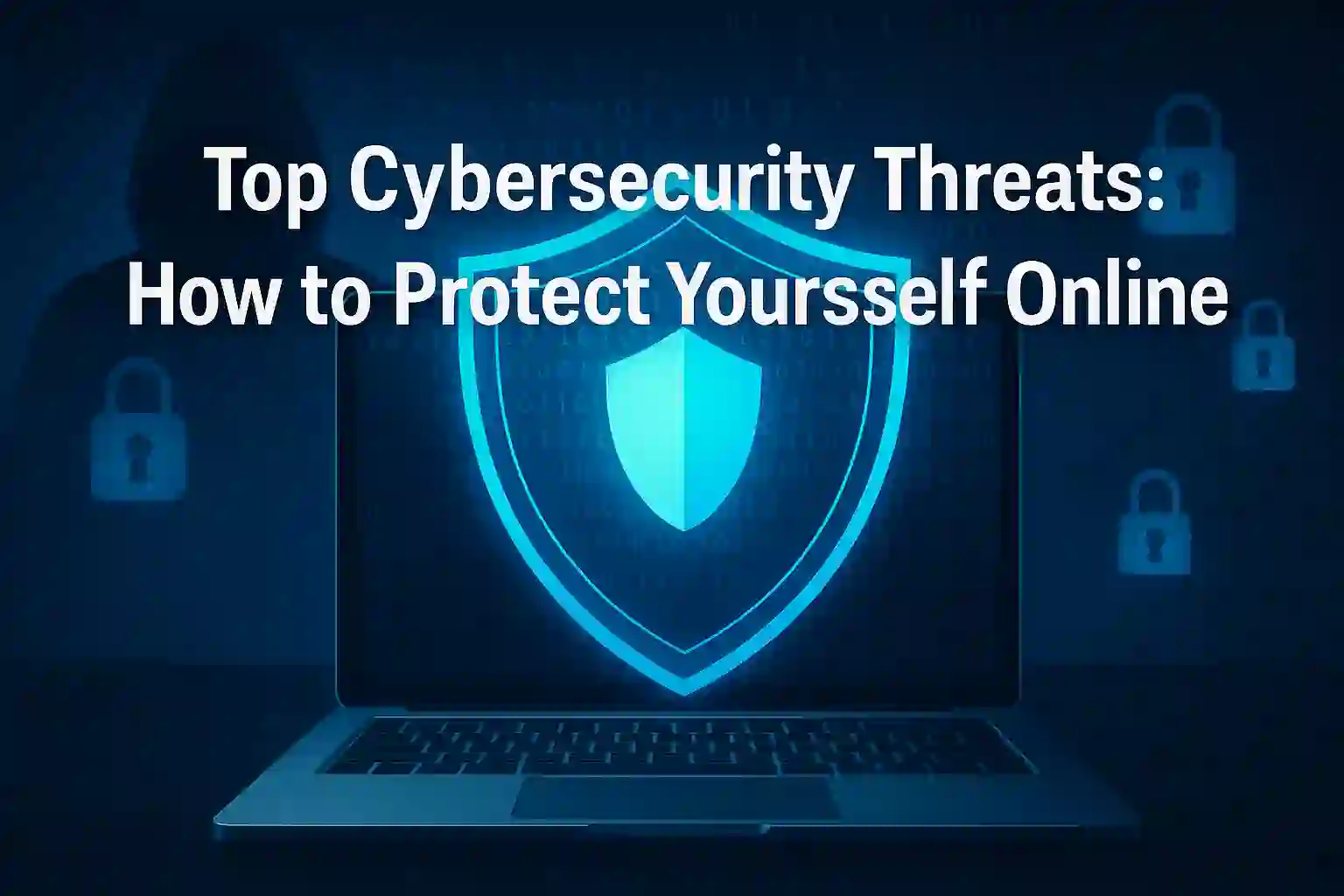How to Protect Your Phone from Hackers: Top Security Tips
Mobile devices are now a big part of our lives. But, this has also led to more cyber threats. Over 1 million mobile devices are hacked every year. Many people lose money and have their identities stolen.

Table of Contents
ToggleCybersecurity is now a big worry for everyone, not just big companies. As we use our phones more, we need better cybersecurity measures for phones. This article will share important tips to keep your data safe.
Key Takeaways
- Understand the common methods used by hackers to gain access to your phone.
- Learn how to secure your device with strong passwords and authentication.
- Discover the importance of keeping your operating system and apps up-to-date.
- Find out how to use public Wi-Fi safely and avoid possible threats.
- Explore additional security measures, such as encryption and two-factor authentication.
Understanding the Threat Landscape
More people use mobile devices every day. This makes phones a bigger target for hackers. It’s important to know the threats to keep our phones safe.
Common Mobile Security Threats in 2023
In 2023, we face threats like malware, phishing, and data breaches. Malware hides in apps, and phishing attacks steal our personal info.
Why Smartphones Are Vulnerable to Attacks
Smartphones are always online and hold our private info. Outdated software and weak passwords make them easy targets.
The Rising Trend of Mobile Hacking
Mobile hacking is getting more common. Hackers use new ways to get into our phones. We need strong security to fight this.
Statistics on Mobile Security Breaches
More and more phones are getting hacked. A lot of users are losing their data to cyber attacks.
Most Common Attack Vectors
Attackers often use phishing emails, malicious apps, and public Wi-Fi networks. Knowing these helps us protect our phones.
By keeping up with threats, we can keep our phones safe. It’s all about being informed and proactive.
READ ALSO – How to Remove Your Personal Data from Data Broker Sites in 2025 [Complete Guide]
Essential Security Updates and Patches
Regular security updates and patches are key to safeguarding your smartphone against threats. These updates fix security holes that hackers might use.
Why Regular Updates Are Your First Line of Defense
Keeping your OS and apps updated is important. Updates often bring security patches to protect your device. Regular updates mean you get the latest security fixes, making it tough for hackers.
How to Enable Automatic System Updates
Automatic system updates keep your device safe without needing you to do anything. Here’s how to do it for different devices:
For Android Devices
- Go to Settings
- Select “System” or “About phone”
- Tap on “Advanced” or directly on “System update”
- Look for “Automatic updates” or “Auto-update” and enable it
For iOS Devices
- Open Settings
- Tap on “General”
- Select “Software Update”
- Enable “Automatic Updates”
Checking for Security Patches Manually
Even with automatic updates, checking for updates manually is a good idea. For Android, go to Settings > System > System update. For iOS, go to Settings > General > Software Update.
| Device Type | Path to Automatic Updates | Path to Manual Update Check |
|---|---|---|
| Android | Settings > System > System update > Automatic updates | Settings > System > System update |
| iOS | Settings > General > Software Update > Automatic Updates | Settings > General > Software Update |
By following these best practices for phone security, you can make your mobile device much safer. Regular updates are a simple yet effective way to protect your data and keep your device safe.
Secure Your Lock Screen
Your smartphone’s lock screen is your first defense against hackers. It’s key to keep it safe to protect your data and keep your phone secure.
Biometric Security Options: Face ID and Fingerprint
Biometric methods like Face ID and fingerprint scanning are top-notch for phone security. They make unlocking your device easy and safe.
Creating Strong PIN Codes and Passwords
Using strong PINs or passwords is also a good idea. Pick something hard to guess to boost your phone’s privacy.
Screen Lock Timeout Settings
Setting your screen to lock quickly is smart. It makes your phone more secure by locking it fast when you’re not using it.
Balancing Security and Convenience
Security is important, but don’t forget about ease of use. Pick a lock method that’s both safe and simple. This way, you’ll use it more often, making your phone even safer.
READ ALSO – How to Avoid Scams on Mobile Payment Apps in 2025
App Security Best Practices
Mobile devices are key for daily tasks. They hold lots of personal data, making them hacker targets.
Vetting Apps Before Installation
Check an app’s permissions before installing. Read reviews and check the developer’s reputation too.
Google Play Store Security Features
The Google Play Store has security tools like Google Play Protect. These tools scan for malware and threats.
Apple App Store Protection Measures
The Apple App Store has strict rules and reviews. Apple’s closed system is very secure.
Understanding App Permissions
Know what permissions an app needs. Be careful of apps asking for too much.
Regularly Auditing Installed Applications
Check your apps regularly. Update them and remove unused ones.
Identifying Suspicious Apps
Watch for apps that use too much battery or data. They might be up to no good.
Safely Removing Unwanted Apps
When removing apps, do it right. This ensures the app and its data are gone.
Follow these tips to keep your mobile device safe. This protects your personal data from threats.
How to Protect Your Phone from Hackers Through Network Security
In today’s world, keeping your smartphone safe from hackers is key. It’s not just about basic security. You need a strong network security plan.
The Dangers of Public Wi-Fi
Public Wi-Fi is a favorite spot for hackers. It’s not secure, making it easy for them to get your private info. When on public Wi-Fi, don’t check sensitive stuff. Or, use a Virtual Private Network (VPN) to hide your internet traffic.
Using VPN Services on Mobile Devices
A VPN makes your internet safe from hackers. It’s very important when you’re on public Wi-Fi.
Recommended Mobile VPN Solutions
Top VPNs for phones are ExpressVPN, NordVPN, and ProtonVPN. They have strong encryption and are easy to use.
Setting Up a VPN on Your Phone
To get a VPN on your phone, download the app. Make an account and follow the steps to connect to a VPN server.
Bluetooth Security Measures
Bluetooth security is also very important. Turn off Bluetooth when you’re not using it. Don’t pair with unknown devices. Keep your Bluetooth software up to date to avoid bugs.
READ ALSO – TorrentGalaxy vs 1337x vs Pirate Bay: Which is Best?
Two-Factor Authentication Implementation
Two-factor authentication adds an extra layer of security. It makes it much harder for hackers to access your sensitive information. By requiring a second form of verification, 2FA significantly reduces the risk of your accounts being compromised.
Setting Up 2FA for Critical Accounts
To start implementing 2FA, begin with your most critical accounts. This includes email, banking, and social media. Most of these services offer 2FA options within their security settings. Enabling 2FA on these accounts will provide a robust defense against unauthorized access.
Authentication App Options
Authentication apps generate time-sensitive codes to verify your identity. Two popular options are:
Google Authenticator
Google Authenticator is a widely used app that generates QR code-based authentication. It’s available for both iOS and Android devices.
Authy and Other Alternatives
Authy is another reliable authentication app. It not only generates codes but also provides backup services and multi-device synchronization. Other alternatives include Microsoft Authenticator and Duo Mobile.
Hardware Security Keys for Mobile
For an additional layer of security, consider using hardware security keys. These physical devices store your authentication data. They can be used with compatible services to provide strong 2FA. Examples include YubiKey and Google Titan Security Key.

Data Encryption and Backup Strategies
Mobile devices now hold a lot of personal info. It’s key to use strong encryption and safe backup methods.
Enabling Full-Device Encryption
Full-device encryption makes all data on your device unreadable. This is done by scrambling the data with a decryption key.
Android Encryption Options
Android devices have strong encryption options. To turn on full-disk encryption on Android:
- Go to Settings > Security & location.
- Find “Encryption” or “Device encryption.”
- Then, follow the steps to finish the encryption.
iOS Encryption Features
iOS devices have encryption on by default. To check if it’s on:
- Go to Settings.
- Tap on “Face ID & Passcode” or “Touch ID & Passcode.”
- Enter your passcode to see the settings.
Secure Cloud Backup Options
Cloud backups add an extra layer of security. You can use:
- Google Drive for Android devices.
- iCloud for iOS devices.
These services make backups safe and easy.
Local Backup Security Measures
For local backups, use encrypted files or secure drives. Update your backups often to keep your data safe.
READ ALSO – 11 Ways to Make Your Online Shopping Safer & More Secure
Phishing Attack Prevention
Phishing attacks are a big worry for people who use mobile devices. Hackers use smart tricks to trick victims. It’s key to know how to fight these attacks, as we use our phones for many things.
Recognizing Mobile Phishing Attempts
Spotting phishing is the first step. Hackers use urgency and fear to get your info. Watch out for messages that say your account will be shut down or you’ve won something.
SMS and Messaging App Security
SMS and messaging apps are often used for phishing. Smishing, or SMS phishing, sends fake messages that look real.
Smishing (SMS Phishing) Detection
To spot smishing, look for bad grammar and spelling. Also, be careful of messages that ask for your personal or financial info.
Secure Messaging Alternatives
Use secure messaging apps for safe chats. Apps like Signal or WhatsApp are good because they encrypt messages.
Email Security on Mobile Devices
Email is a big target for phishing. Always be careful when checking emails on your phone.
Spotting Suspicious Links
Be careful of suspicious links in emails. Check the link’s destination by hovering over it. Don’t click on links that look odd or you don’t know.
Handling Unexpected Attachments
Don’t open unexpected attachments from people you don’t know. They might have malware.
Knowing about phishing tricks and keeping your phone safe can help a lot. This way, you can avoid falling for phishing scams.
Advanced Security Tools and Apps
Mobile devices are key to our daily lives. So, advanced security tools and apps are vital. They protect your device and personal data from threats.
Mobile Antivirus Solutions
Mobile antivirus solutions are key for finding and removing malware. For Android users, Avast and Norton are top choices. They protect against many threats.
Top Security Apps for Android
- Avast Mobile Security
- Norton Mobile Security
- Kaspersky Mobile Antivirus
Security Solutions for iOS
iOS devices also need antivirus solutions. Avast and Norton have iOS versions.
Privacy-Focused Browsers
Privacy-focused browsers boost your mobile security. Tor and Brave have features like ad-blocking and tracker protection.
Password Managers for Mobile
Password managers are key for keeping passwords safe. They create and store complex passwords. This makes it easy to have unique passwords for each account.
Benefits of Password Managers
- Generate complex, unique passwords
- Securely store passwords across devices
- Simplify login processes
Top Mobile Password Manager Options
| Password Manager | Key Features | Compatibility |
|---|---|---|
| LastPass | Password generation, secure storage | Android, iOS |
| 1Password | Password generation, secure storage, travel mode | Android, iOS |
| Dashlane | Password generation, secure storage, auto-fill | Android, iOS |
Physical Security Measures

Your phone’s security isn’t just about software; it’s also about physical protection. Keeping your device safe is key to protecting your personal data.
Preventing Unauthorized Physical Access
Using a lock screen is a simple way to secure your phone. You can use a PIN, password, or biometric authentication like fingerprint or facial recognition. Biometric authentication makes it harder for others to access your device.
Remote Tracking and Wiping Options
If your phone is lost or stolen, remote tracking and wiping can save the day. Both Android and iOS devices offer these features.
Find My Device for Android
Android users can use “Find My Device” to locate their phone, lock it, or erase data remotely.
Find My for iOS
iOS users have “Find My.” It lets them locate their device, play a sound, or erase data remotely.
| Feature | Android | iOS |
|---|---|---|
| Remote Location | Find My Device | Find My |
| Remote Lock | Yes | Yes |
| Remote Erase | Yes | Yes |
SIM Card Security Features
SIM card security is also important. Using a SIM card PIN can stop others from using your SIM if your phone is lost or stolen. It’s smart to keep your SIM card info up to date.
By using these physical security measures, you can greatly lower the risk of your phone being compromised. Remote tracking and wiping options are very helpful if your device is lost or stolen. They help keep your data safe.
READ ALSO – Top 11 Phone Tracker Apps with GPS Tracking: Stay Connected and Safe
Privacy Settings Optimization
Keeping your privacy settings up to date is key to mobile security. It’s about managing your device to control data use.
Location Services Management
Location services collect a lot of data. You can adjust these settings to find a balance between use and privacy.
App-Specific Location Permissions
Check which apps can see your location. Only give permission to apps that really need it.
Background Location Tracking
Turn off background tracking for apps that don’t need it. This cuts down on data collection.
Ad Tracking Limitations
Limiting ad tracking helps keep your ads less targeted. Both Android and iOS let you control ad personalization.
App Data Collection Controls
Privacy Settings in Android
Go to Settings > Privacy to manage data and ad settings.
Privacy Settings in iOS
Conclusion
Keeping your phone safe from hackers needs a few steps. By following the tips we’ve shared, you can make your phone more secure. This helps protect your personal information.
Important steps include updating your phone and apps often. Use strong passwords and biometric login. Also, be careful when using public Wi-Fi.
Using two-factor authentication and encrypting your data are key. Backing up your phone regularly is also important. These actions help keep your phone safe from hackers.
By following these tips, you can lower the chance of your phone getting hacked. Keeping your data safe is very important in today’s world. Stay up-to-date with the latest security tips to protect yourself.
FAQ
What are the most common types of mobile security threats?
Common threats include malware, phishing, unauthorized access, and data breaches. These can harm your data, mess with your device, and cost you money.
How can I protect my phone from hackers when using public Wi-Fi?
Use a VPN to hide your internet traffic. Avoid sharing sensitive info. Keep your device and apps updated.
What is two-factor authentication, and how does it enhance phone security?
Two-factor authentication (2FA) adds a second check, like a code or scan, to your password. It makes it harder for hackers to get into your accounts.
How often should I update my phone’s operating system and apps?
Update your phone and apps as soon as you can. Updates often fix security holes and protect you from threats.
What are some best practices for securing my lock screen?
Use a strong PIN, password, or biometric like Face ID. Set your screen to lock after a short time to keep it safe.
How can I identify and remove suspicious apps from my phone?
Check your apps often. Look for ones with too many permissions or that you don’t know. Remove any you don’t want.
What is the importance of data encryption, and how can I enable it on my phone?
Encryption makes your data unreadable to anyone without the right key. To enable it, go to your settings and find the encryption option. The steps vary by device.
How can I prevent phishing attacks on my mobile device?
Be careful with links and info in emails or messages. Check if messages are real. Use security apps and keep your device updated.
What are some recommended security apps for Android and iOS devices?
For Android, try Avast, AVG, or Kaspersky. For iOS, use Norton or Lookout. They offer protection against malware and more.
How can I remotely track and wipe my phone if it’s lost or stolen?
Use Find My Device for Android or Find My for iOS. These services let you find, lock, or erase your device remotely. Enable them before you lose your phone.
What are some best practices for managing location services and ad tracking on my phone?
Check your settings and limit app permissions. Turn off ad tracking when you can. Update your privacy settings often to control your data.







4 thoughts on “How to Protect Your Phone from Hackers: Top Security Tips”
Hi Neat post Theres an issue together with your web site in internet explorer may test this IE still is the marketplace chief and a good component of people will pass over your fantastic writing due to this problem
Thank you
Your blog is a breath of fresh air in the often stagnant world of online content. Your thoughtful analysis and insightful commentary never fail to leave a lasting impression. Thank you for sharing your wisdom with us.
Thank you